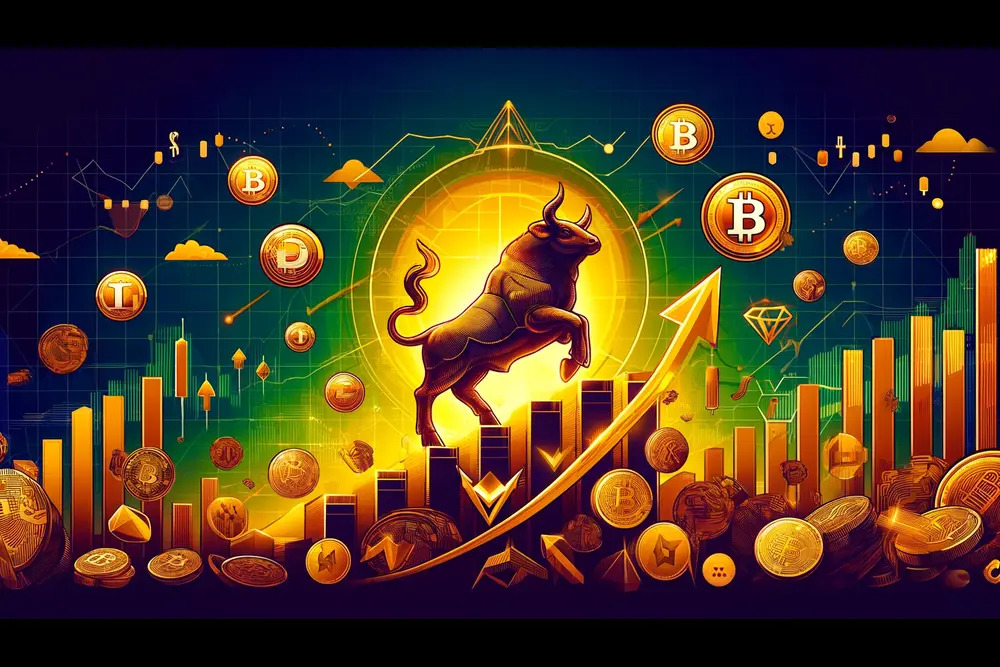Global Crypto Art market size was USD xx billion in 2023 and the market is projected to touch USD xx billion by 2032, at a CAGR of xx% during the forecast period. The development of NFTs has completely changed the market for, and ownership of, digital art. Demand for crypto art has increased as a result of NFTs’ ability to create distinct, verifiable ownership records for digital art. The market for crypto art is expanding quickly as more and more artists, collectors, and investors accept NFTs. Blockchain technology further propels the market by ensuring the uniqueness and authenticity of digital art.
The value of NFTs and cryptocurrency art is quite speculative, and their prices frequently change significantly in response to market movements, media frenzy, and celebrity endorsements. Because artworks can lose value quickly, this volatility puts buyers and investors in a high-risk situation. Because of the market’s speculative nature, there are worries about its long-term viability and the possibility that transient trends rather than enduring cultural or creative merit may drive it. This might discourage more people who are risk averse from participating in the market. Integrating the metaverse & crypto art gives designers incredible opportunities to produce immersive digital experiences. Within decentralized systems, artists can create interactive digital galleries, art shows, and three-dimensional in nature experiences. The emergence of virtual worlds such as Decentraland and Cryptovoxels provides crypto artists with novel avenues for exhibiting and commercializing their artwork, hence augmenting their market penetration and audience participation.
Countries Covered
U.S., Canada, Mexico, U.K., Germany, France, Italy, Spain, China, India, Japan, South Korea, Australia, Brazil, Argentina, GCC Countries, and South Africa, among others.
Click: https://organicmarketresearch.com/global-crypto-art-market
Global Crypto Art dynamics
The factors influencing the dynamics of the Global Crypto Art (ESS) market include regulatory mandates, technological advancements, and increasing industrial safety awareness. The demand for environmentally conscious alternatives, like green NFTs, is growing as worries about how blockchain technology may affect the environment. Sustainable minting procedures and blockchain networks with low energy consumption are being investigated by artists, platforms, and collectors. With more eco-aware customers and longer-term business viability, this change offers crypto art platforms and artists the chance to spearhead the shift toward ecologically friendly techniques.
Global Crypto Art drivers
Decentralized Art Platforms and Marketplaces
The creators may market directly to collectors by avoiding traditional galleries & auction houses by using decentralized platforms like Foundation, Rarible, and Open Sea. These platforms facilitate the creation, promotion, and international sale of art in a more democratic and accessible manner, hence propelling market growth. The growing number of established and up-and-coming musicians utilizing these platforms can also be attributed to their reduced transaction costs, transparency, and worldwide accessibility.
Growing Interest from Institutional Investors and Celebrities
The market has received a lot of attention thanks to the participation of prominent celebrities, venture capital firms, and institutional investors in the crypto art field. Celebrity endorsements and high-profile sales have added credence to the idea that crypto art is a real asset class. The mainstream media’s and the financial industry’s growing interest in the market has boosted its credibility and visibility, drawing in new customers and accelerating expansion.
- Restraints:
Environmental Concerns from Blockchain Technology
Blockchain technologies networks’ energy consumption has caused serious environmental issues, particularly for those that use Proof of Work (PoW) techniques like Ethereum (prior to its switch to Proof of Stake). Carbon emissions are increased by the massive amounts of electricity needed to mint NFTs and carry out transactions on these platforms. As more people become aware of the ecological impact, this has drawn criticism from environmental organizations, artists, and collectors, which could hinder the market’s growth.
Legal and Regulatory Uncertainty
The market for crypto art is still very new, developing quickly, and lacks established legal structures. Many jurisdictions still have unsolved issues pertaining to copyright infringement, property rights, and tax legislation. The absence of well-defined legal regulations regarding NFTs and crypto art generates ambiguity for artists, purchasers, and financiers, thereby impeding the market’s sustained expansion and expandability.
- Opportunities:
Fractional Ownership and Investment
Fractional ownership of a single artwork is made possible by crypto art, enabling several investors to possess a portion of it. With the help of this strategy, high-value art investments become more accessible to lesser investors, opening up a market that has hitherto been dominated by wealthy collectors. It transforms the buying, selling, and investing in of art by increasing access to valuable items and providing artists with more visibility and liquidity.
- Segment Overview
By Type, The Crypto Art market is segmented into Photos, Videos, Music, Paintings, and others. The global market for crypto art is expanding at the quickest rate in the videos area. As non-fungible tokens (NFTs) have become more widely available, artists are utilizing films as a platform to present dynamic and interactive digital art. In the world of cryptocurrency art, video art is becoming more and more popular because to its capacity to captivate viewers with sound and motion, especially among collectors seeking for more immersive experiences. The market for crypto art is still dominated by paintings. The mainstay of crypto art has been digital paintings, which are frequently offered for sale as NFTs. Numerous well-known artists first gained notoriety through these kinds of sales. Both new purchasers who are interested in blockchain technology and traditional art collectors will find digital paintings appealing as they present a well-known medium in a fresh digital format.
By Application, The Crypto Art market is segmented into Personal Use, Commercial Use. In the global market for crypto art, the commercial application category is expanding at the fastest rate. For investment, advertising, and promotional objectives, companies, businesses, and groups are using cryptocurrency art more and more frequently. The need for cryptocurrency art in commercial applications including marketing campaigns, product launches, and collaborations with digital artists is driven by NFTs and blockchain technology, which enable businesses to produce unique digital assets. The market for crypto art is still dominated by the personal use sector. The primary buyers & collectors of crypto art are individuals, motivated by their desire to possess exclusive, limited-edition digital artworks. The emergence of NFTs has given collectors the ability to display their digital assets in online galleries or on social media, which has fueled their continuous popularity and market supremacy.
Global Crypto Art Overview by Region
The market for crypto art that is expanding the fastest is in the Asia-Pacific area. Countries like China, Japan, and South Korea are seeing a rise in the popularity of blockchain technology and NFTs as a result of the curiosity of tech-savvy younger generations including artists experimenting with digital art forms. The implementation of blockchain technology is also receiving more support from public and private entities in these nations, which is fostering the expansion of the crypto art market in the area. North America’s prominence in the worldwide crypto art business is largely due to the United States. When it comes to NFT adoption, cryptocurrencies, and blockchain technology, the U.S. has led the way. North America remains in the forefront of the global crypto art scene due to its large number of digital artists, collectors, and platforms operating there as well as its strong digital transaction infrastructure.
Global Crypto Art market competitive landscape
Leading companies such as IBM, OpenSea, Gemini, SuperRare, Mythical Games, Async Art, Spring Labs, Axie Marketplace, Enjin Marketplace, and NFT ShowRoom, Nifty Gateway, NFT Hunters, SALT Lending, TQ Tezos, and Coinbase. The global market for crypto art is extremely competitive and dynamic due to the convergence of blockchain technology with digital art. Newer platforms that provide celebrity-driven drops and carefully curated collections, including Foundation & Nifty Gateway, are likewise becoming more and more competitive. The growing use of cryptocurrencies, well-publicized NFT sales, and the participation of conventional art consumers all influence the market. Competition is getting more intense due to ongoing developments in NFT standards, the rise of metaverse apps, and discussions about copyright and sustainability. These factors force platforms to stand out through curation, artist support, and user experience.
Contact Us:
Mob : +91 9319642100
Noida One Tower Sec 62 Noida 201301
Sales : sales@organicmarketresearch.com
Website : https://www.organicmarketresearch.com















